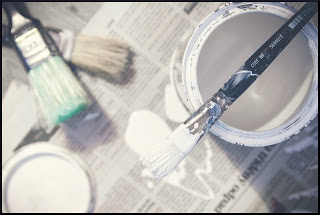Presently, acrylic paint is a favorite medium for mixed media artists and craft enthusiasts worldwide. Its popularity stems from its broad color spectrum, quick drying time, ease of use, and simple cleanup process. Acrylics are versatile and cater to painters across various styles and formats.
Comparable to high-quality oil paintings, acrylics can be applied to diverse surfaces such as canvas, walls, wood, fabric, metal, and ceramics, offering limitless possibilities for texture and customization through different mediums.
If you've ever been to a local art supply store, you'll know how
overwhelming it is to choose, especially with various brands and mediums (like oil, acrylic, watercolor, and pencils) on offer.
To simplify this task, consider the following factors when purchasing acrylic paints to achieve a vibrant, consistent, and smooth finish in your artwork:
Color Choice
Choosing a color largely depends upon your personal choice. All colors don't appeal the same way to all of us. We all have some personal favorites.
Along with your favorite colors, try to keep primary colors. Secondary colors can made from the primary colors. Apart from primary and secondary, have white, and black colors in the paint box. You can make various color tones and shades using black and white colors.
As an artist, did you ever face a time where your imagination did not turn out on canvas after several trials? If yes, one of the thing that could have gone wrong is the color choice. A thoughtful color selection is essential to bring out the imagination on the surface.
Primary Colors:
- Red - Vermillion or Pyrrol or Scarlet
- Blue - Ultramarine or Phthalo
- Yellow - Cadmium
Secondary Colors:
- Green - Phthalo
- Orange
- Purple
Other useful colors:
- Burnt Sienna (Burnt Umber)
- Titanium White
- Cerulean blue for the sky
- Magenta
Sometimes, you may want to match a color that is laid down in your picture. In such cases, instead of buying so many matching colors, try to mix a few colors to get that precise shade.
For example, the brown along with the blues blended will provide you a few dark. The yellows and blues provide all the greens you would ever want!
What is Paint Grade?
- Low-quality pigment is added to the binder.
- Color intensity is low when mixed with other colors.
- Colors appear darker when dry.
- The cheapest acrylic paint for beginners comes as an 'Acrylic paint set'. The set contains a variety of colors in small tubes.
Fluid acrylic or soft acrylic paint both are good for beginners. If you are painting for a hobby, decorative purposes, or just learning, then student-grade acrylic paints should be adequate.
Artist grade
- It contains a high load of pigment concentration, mixed with the best binders for a smooth consistency, giving a saturated color.
- Has fewer additives or extenders.
- The color intensity and shine are maintained when blended with other paints or mediums.
- The colors on the painting look fresh for years.
The heavy body has a pigment-rich color range which tends to be expensive and individual colors are priced differently based on the special pigment used in the making.
Acrylic paint cost differs by a great deal depending on different variables used while it is produced. You will notice that a higher grade range of paints is divided into series (usually a price band) that reflect the cost.
For
all those artists looking to buy artist grade paints, here are the few deciding factors to consider when making a choice:
Vibrancy/Brightness
It's easier to notice that better paints with a higher pigment concentration are more bright. The amount
of pigment supply and purity will majorly decide the vibrancy of the color.
Some pigments which are not naturally sourced are made from a mix of pigments to achieve the target color.
Consistency
Acrylic paints come in a range of consistency. Fluid, soft body acrylic, heavy body acrylic, each is used for a precise purpose. Choose the one as per your requirement. For example, you will choose fluid paints for pour painting and use a heavy body for impasto, texture work.
Opacity
Student and Artist colors both have a different amount of pigment; hence its opacity also differs. Natural pigment character dictates each color.
You should look at the packaging labels to see opacity level. You will see that some are opaque, others are semi-opaque, and others are transparent. Use transparent ones if you want to use them for glazing and tinting.
Choose opaque colors if you want to paint over any existing color. They are great for making solid, flat areas of color and covering up any mistakes you’ve made.
Light source
Consider the level of permanence before buying the paints. Permanence refers to the length of time your painting
will last without fading or losing its texture. It can be checked using light fastness rating on the bottle.
For paintings to be hung outside in direct sunlight, checking the light fastness rating is essential. Choose paints that have a rating of at least fair if your paintings are going to hang outdoor.
Artist quality acrylics typically have high permanence and can retain their vibrancy and texture for as long as good oils paints.
Which Tube Size to choose?
There does not seem to be a 'general' dimension of tube amongst different manufacturers. For beginners, start with 20-22ml tubes as they are sufficient for a decent size picture.
Small tubes are handy and can be easily carried for outdoor events or to classes. The travel kit can accommodate more tubes, and hence you can take more colors with you.
When should you buy bigger tubes? Check two things; do you need it, and is it economical? If any answer is yes, then go for it.
Additionally, using big tubes makes you less hesitant to use a big chunk out because it is proportionally less of what you have! And always buy bigger tubes of white acrylic paint, you need that a lot.
How to lighten Acrylic Colors
Color Wheel
The colors in the color wheel move from pure color to pristine white in the center. A gradation between these colors shows the number of color shades that can exist by adding white.
A simple example of gradation can be the blue sky slowly comes down to white where you just see the horizon.
Darken Acrylic Paint Colors by Shading
Remember that black is powerful. Therefore just a little paint goes a very long way. If you are unsure of the darker tones, try a few dark strips on a rough pad; choose the one which looks more natural.
What is Hue?
Thus a label that states: Cadmium Yellow Hue Means that this isn't a pure pigment made from Cadmium yellow.
Some of it could be Cadmium yellow, but it's been mixed with something else to provide a similar shade. It is because some organic pigments are no longer accessible to create those colors.
Lastly, as there are various brands in the market, try to pick a few every time and experiment with them to find which works best for you. Everyone has their favorite color and brand!
What is Acrylic Gel and Medium
By adding acrylic gel to your paint, you can change the paint viscosity and create beautiful textures. Fluid mediums, gels, and pastes are available to can change the paint's consistency. They maintain the paint’s ability to make a sturdy film when dry.
These gels, pastes, and mediums give more flexibility and creative freedom than acrylic paints. You can change the texture from thick impasto to small peaks, and consistency can be altered from thick to the thin flowing liquid.
You can even modify the drying time, and so on. Needless to say, there is endless scope for the abstract painting textures you can create.
Altering the paint body is done by adding some water, but if you add excess water, the structure of the paint will break down losing the shine, and texture, and making it brittle when dry.
Altering drying time is an excellent option for those looking for more time for paints to dry. You can buy more time by adding a little retarder to the paints.
Golden Open Acrylics are specially designed for artists who want more time to work before the paint dry. They have a consistency that falls between heavy body and fluid paints.
Hope you have some information that will be beneficial when you shop for acrylic paints!








